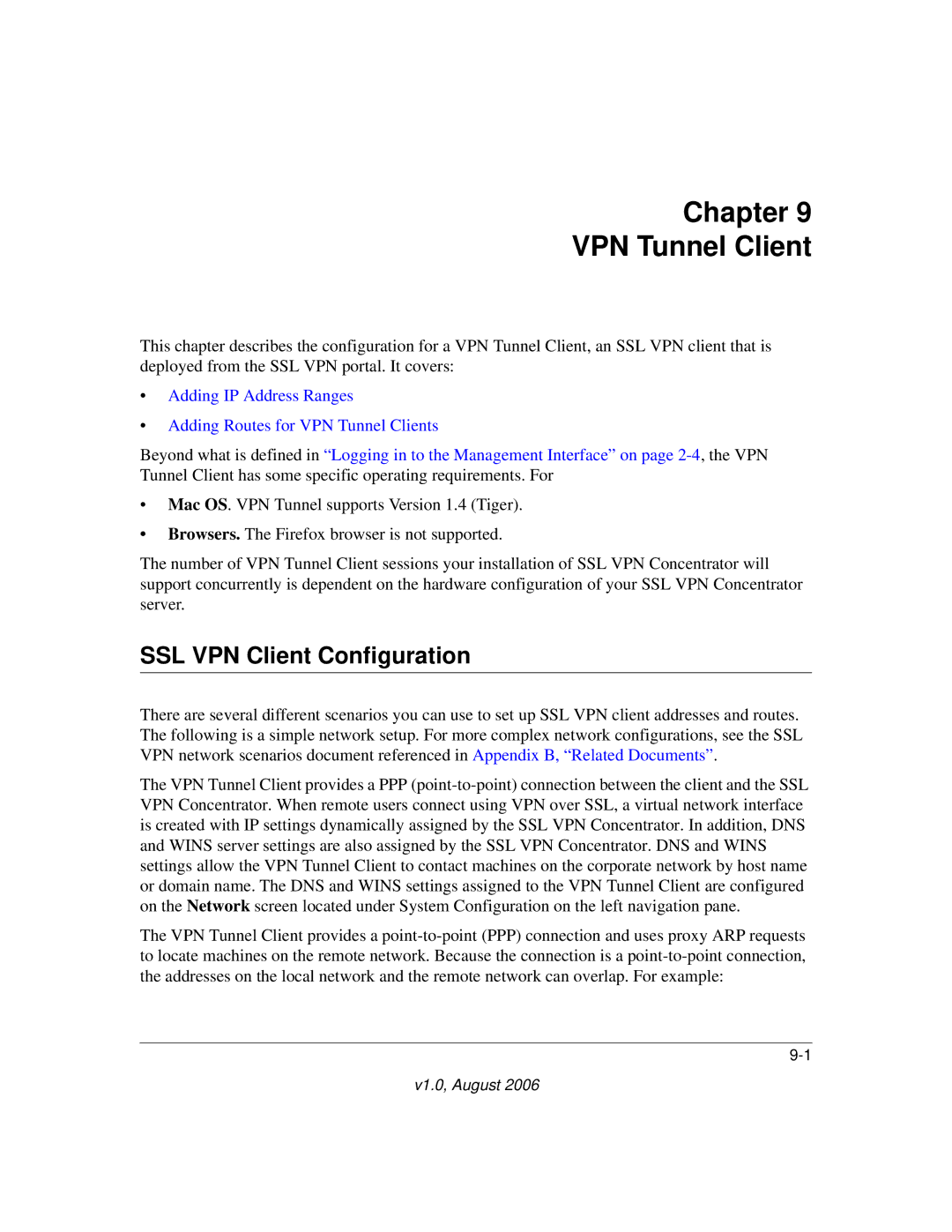
Chapter 9
VPN Tunnel Client
This chapter describes the configuration for a VPN Tunnel Client, an SSL VPN client that is deployed from the SSL VPN portal. It covers:
•Adding IP Address Ranges
•Adding Routes for VPN Tunnel Clients
Beyond what is defined in “Logging in to the Management Interface” on page
•Mac OS. VPN Tunnel supports Version 1.4 (Tiger).
•Browsers. The Firefox browser is not supported.
The number of VPN Tunnel Client sessions your installation of SSL VPN Concentrator will support concurrently is dependent on the hardware configuration of your SSL VPN Concentrator server.
SSL VPN Client Configuration
There are several different scenarios you can use to set up SSL VPN client addresses and routes. The following is a simple network setup. For more complex network configurations, see the SSL VPN network scenarios document referenced in Appendix B, “Related Documents”.
The VPN Tunnel Client provides a PPP
The VPN Tunnel Client provides a
